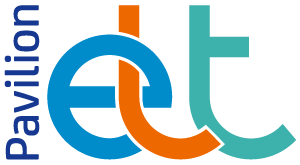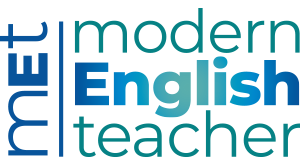In this series, Nicky Hockly explains aspects of technology which some people may be embarrassed to confess that they don’t really understand. In this article, she explores e-readers and e-books.
1. What exactly is an e-reader?
An e-reader is a reader of electronic books – that is, a device that allows you to read books in electronic format (e-books). E-readers come in different sizes: some are slightly larger than an average paperback, some are pocket-sized. But all are a lot thinner and a lot lighter than a book. Names that you may be familiar with are the Kindle (Amazon), the Nook (Barnes & Noble) and the Sony e-reader. Some have touch screens (such as the latest Sony) and some use navigation buttons (such as the Kindle). Recent-generation e-readers allow you to annotate your e-books, and to share snippets of what you are reading with social networks such as Facebook and Twitter through limited internet browsing.
2. Why would anybody want to use an e-reader? What’s wrong with a paper book?
Nothing is wrong with paper books at all, and despite all the brouhaha, e-readers are unlikely to spell their demise. The book has shown itself to be a remarkably resilient technology. Nothing beats the sensation of sitting on the sofa, book in hand. I read e-books and real books. E-readers are simply another way to read. They do also have several advantages:
- You can store hundreds of books (and documents) in one slim device. That saves lugging books around, especially when you travel.
- E-readers use a technology called e-ink, so e-reader text looks and feels different to text on a computer screen. Reading from a screen can cause eye strain, but because e-readers are not backlit, they are much easier on the eye. You can easily read your e-books in direct sunlight, for example. In this way, reading text on an e-reader is very different to reading it on a device such as an iPad, a laptop or a smartphone.
- You can access thousands of books online and buy them with a click of a button. They are delivered to your ereader in seconds. No waiting for the postman to deliver the book you ordered weeks ago!
3. How can I find free or very cheap e-books?
There are many free books available online, particularly classics with expired copyright. Project Gutenberg (www.gutenberg.org) is an excellent source for these. Websites are springing up that allow e-books to be borrowed and lent among users for free, which means you don’t have to buy everything for your e-reader. Rather than me providing a long list of free e-book and lending sites here, take a look at this blog post for recommended sources: www.emoderationskills.com/?p=466.
4. I’ve heard about ELT digital coursebooks being used in some schools – is this the same thing?
Not quite. In the world of ELT, multimedia electronic coursebooks are starting to make an appearance, but these require more sophisticated devices, such as tablet computers, if students are to watch and listen to audio and video or to access online information. There are examples of the old print coursebook simply scanned and delivered in electronic format being touted as new digital coursebooks – but this reflects the fact that many publishers have been caught short by the demand for digital coursebooks and have not yet had the time or the money to develop rich multimedia digital coursebooks. To get an idea of the future of digital books, watch this video referenced in the 2011 Horizon report: http://vimeo.com/15142335.
The e-books I am talking about in this article are the good old-fashioned ink and print variety of book, delivered through an electronic device. Think Charles Dickens’ Great Expectations, or Thoreau’s Walden, but on an e-reader screen.
5. So how are e-readers relevant to me or my students?
E-readers are not devices you would specifically want to use in class. For onscreen reading in class, or for accessing (good) multimedia digital coursebooks, a more sophisticated and multifunctional device such as an iPod Touch or a tablet computer makes more sense. E-readers like the Kindle, Nook or Sony e-reader are good for, well, reading. And there are ways in which standard e-readers can be helpful to both you and your students. As a teacher, you have access to a growing pool of texts for leisure reading, reference and professional development. Although many ELT publishers are still bucking the trend, it will only be a matter of time before teachers’ resource books become available in simple electronic format as well as in print. And students who are already readers in their own language can be encouraged to access English texts if they have an ereader – they can subscribe to magazines and newspapers in English, for example.
I’ve personally found an e-reader a great addition to my electronic devices. I read a lot more, and I spend less time in front of a computer screen because of it – no bad thing. E-readers are dropping considerably in price as they become more ubiquitous and they are, therefore, increasingly affordable. Sales of e-books are rising. Amazon reported in January 2011 that sales of e-books had outstripped sales of paperbacks. This is clearly a trend which will continue. And if you love reading, it’s a godsend.
Nicky Hockly has been involved in EFL teaching and teacher training since 1987. She is Director of Pedagogy of The Consultants-E, an online training and development consultancy. She is co-author of Teaching Online (DELTA Publishing), which was nominated for a 2011 British Council ELTon award. She maintains a blog at www.emoderationskills.com.
This article first appeared in English Teaching professional, Issue 74, May 2011.



